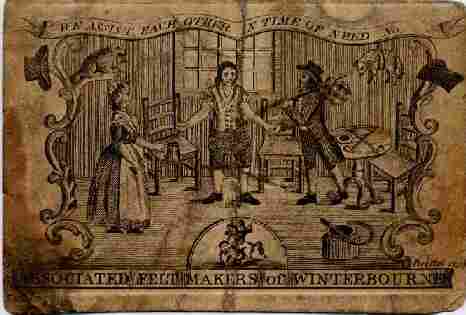 «Home
«Home «Home «Home |
Watley's End Residents Society
|
|
Hat-making in Watley's End
"THE HISTORY OF HATTING IN WATLEY'S END" - A talk on Wed March 25th 2009.A full house of 80 awaited Chris Heal when he came to Salem to speak about his research. We learned about many aspects of the industry - the processes involved, like the 'bow'; the unpleasant substances used, like mercury nitrate which accounted for 'mad hatters' disease and the urine which explains 'Penny Lane' in Frampton; the warren set up by the Howses in Cloisters to provide rabbit fur; the families and companies concerned, e.g the Symonds, Vaughans, Francombes and Christies; and some of the associated buildings. He said that nearly all the cottages built in Watley's End before 1810 would have been hatters' dwellings. It was clear from 'question time' that many in the audience had close family links with the industry and even 'newcomers' found it a fascinating evening. We all look forward to Chris' publication to come on "The Hatters Of Bristol And South Gloucestershire, 1550 - 1900".
(and from Ludwell's "History of Winterbourne" 1972)
The Hat-making industry flourished from 1770 at Watley's End and Frampton Cotterell. Christies of Stockport set up their first Hat Factory at Frampton Cotterell largely because the water was very suitable.
In 1866 the first Forming and Blowing machines were introduced and it was decided to close down the Watley's End factories in 1871. The men, however, were offered work either at Christies Stockport or London factories.
Beaver hats were made on a large scale at Watley's End in Factory Road where a man named Vaughan and later a Francombe employed more than a hundred men. Mr and Mrs Vaughan were known as "the King and Queen of Watley's End".
At one time about five hundred hatters used to meet near the Quarry in Swan Lane to discuss Trade Rules and afterwards adjourn to the basement of the first of Norman Cottages for a tankard of ale (brewed locally and probably an inducement to attend the meeting?).
The Associated Feltmakers of WinterbourneThe loss of the industry was a sad blow to Watley's End in particular as there were only a few houses there at the end of the 18th Century and these considerably increased while the trade flourished.